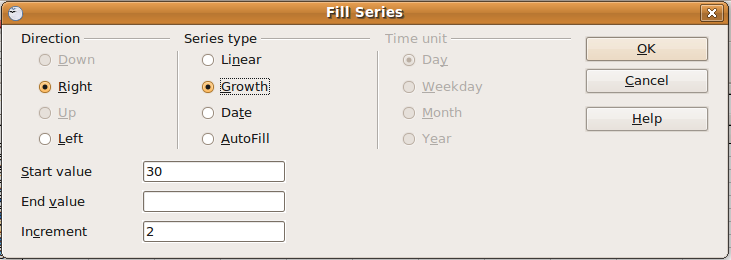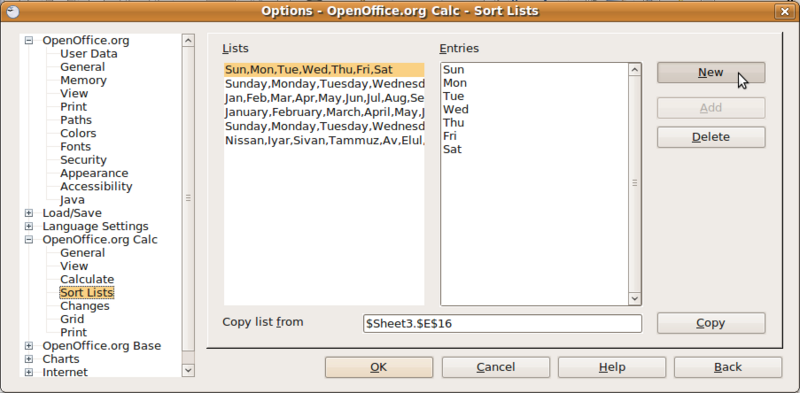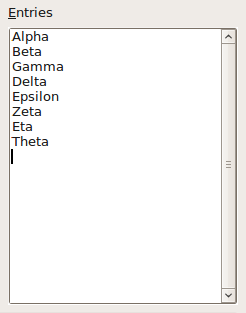Speeding up data entry
| Working with Spreadsheets in OpenOffice.org Calc | |
|---|---|
| Working with cells | Selection | Inserting | Deleting | Widths and heights | Entering data | Changing contents | Copy, move, delete | Shifting cells | Sorting data | Speeding data entry | Find and replace | Practice | Summary |
Entering data into a spreadsheet can be very labor-intensive, but Calc provides several functions for automating input, especially of repetitive material. They include autofill, selection lists, and the ability to input information into multiple sheets of the same document.
Duplicate existing content with the fill tool
At its simplest, the fill tool is a way to duplicate existing content. The contents of a cell will be duplicated to the highlighted cells, up, down, left or right.
Calc also includes a Fill tool, available on the Edit menu. Highlight the cell to be copied and the set of adjacent cells to which the contents will be duplicated.
- Select Edit > Fill
- Select right, down, up or left, the direction in which the cells are to be duplicated.
Increment data entries in successive cells
In some instances you may want to enter a series of numbers or other type of data in a range of adjacent cells. To do this, you can use the autofill tool directly or via the Series... menu option.
The autofill tool completes the series following the pattern of values in the first two cells (for numbers) and the first cell (for dates and defined sort lists).
- Hold down Ctrl if you do not want to fill the cells with different values.
- When a list reaches the last defined item, it will begin anew with the first item.
The Fill Series dialog can be used to create a growth series, wherein subsequent values follow an increasing or decreasing geometric pattern. For example, to create the series: 30, 60, 120, 240,...:
- Highlight the cells to contain the series.
- Select Edit > Fill > Series....
The Fill Series dialog displays.
- Click on Growth under Series type.
- Enter 30 in Start value.
- Enter 2 in Increment (the value by which each term is multiplied to calculate the next term in the series).
Create your own sort lists to increment data entries
Calc uses sort lists to store the data for creating customized series. Calc provides a number of predefined lists, e.g., the month series in the last activity and offers users the functionality to define their own. You might want to create a sort list if you have a set of standard headings (e.g, students in a course, branch offices in a company).
Sharing content between sheets
You might want to enter the same information in the same cell on multiple sheets, for example to set up standard listings for a group of individuals or organizations. Instead of entering the list on each sheet individually, you can enter it in all the sheets at once. To do this, select all the sheets (hold down Ctrl and click on the tab for each of the sheets), then enter the information in the current one.
Note that this technique overwrites any information that is already in the cells on the other sheets—without any warning. For this reason, when you are finished, be sure to deselect all the tabs (hold down Ctrl and click each tab), so that each sheet can be edited without affecting the others.












